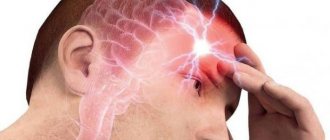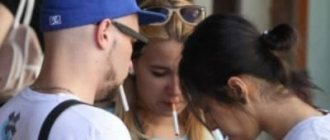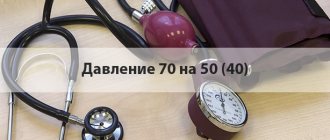Description of other types of diseases starting with the letter “T”: Toxic encephalopathy; Torsion dystonia; Traumatic encephalopathy; Peripheral nerve injuries; Transient global amnesia; Transient ischemic attack; Cavernous sinus thrombosis; Tuberculous meningitis; Brain tuberculoma; Tuberous sclerosis.
Torsion dystonia is a progressive disease of the central nervous system, which is quite rare in medical practice. The main symptom of the pathology is uncontrolled contraction of various muscle groups, leading to the development of pathological postures. As the pathological condition progresses, the patient experiences various forms of hyperkinesis (sudden involuntary movements).
Complications include joint contracture and spinal curvature. The diagnosis of torsion dystonia is made based on the exclusion of other pathologies of the central nervous system and secondary torsion dystonia. Therapy is carried out with B vitamins, antiparkinsonian drugs, antispasmodics and anticonvulsants. In case of stereotactic destruction of subcortical structures of the brain, surgical treatment is resorted to.
General information about pathology
Torsion dystonia (from the Latin “torsio” - twisting) is a chronic disease of the central nervous system, entailing tonic muscle disorders with the subsequent appearance of hyperkinesis and the formation of aphysiological postures in the patient. A pathology of this nature was first described in 1907, but given the symptoms it was classified as hysterical neurosis.
Later, in 2011, G. Oppenheim proved the organic nature of torsion dystonia, but for a long time there were numerous discussions on the nosological affiliation of the disease. The pathogenesis of torsion dystonia still remains unexplored.
The diagnosis of torsion dystonia is made to patients of any age. However, the vast majority of patients are young people under twenty years of age. 65% of the disease is diagnosed in children and adolescents under 15 years of age. Depending on the place of residence, the incidence of the pathology is 1 case per 160 thousand people or 1 per 15,000. On average, 40 cases per 100,000 population occur.
Torsion dystonia is considered a fairly pressing problem in modern medicine. This is due to the fact that the disease is becoming more common and leads to disability in young people. Moreover, today there is no truly effective pathogenetic therapy to minimize the complications of the disease.
Treatment
There are currently no medications that can prevent the development of dystonia or slow the progression. However, there are several treatment options that can relieve some of the symptoms of dystonia, so doctors can tailor each patient's treatment plan based on specific symptoms.
- Botulinum therapy. Botulinum toxin injections are often the most effective treatment for focal dystonia. Injecting small amounts of this chemical into affected muscles prevents muscle contractions and may provide temporary improvement in the abnormal postures and movements that are characteristic of dystonia. These injections were originally used to treat blepharospasm, but are now widely used to treat other major dystonias. Botulinum toxin reduces muscle spasms by blocking the release of the neurotransmitter acetylcholine, which causes muscle contraction. The effects usually begin to appear a few days after the injection and can last for several months before another injection becomes necessary.
- Drug treatment. Several classes of drugs that affect different neurotransmitters may be effective in treating various forms of dystonia. These drugs include: Anticholinergics - block the action of the neurotransmitter acetylcholine. Medicines in this group include trihexyphenidyl and benztropine. Sometimes these medications can cause side effects such as drowsiness or memory problems, especially when used in high doses and in older people. These side effects may limit their beneficial effects. Other side effects, such as dry mouth and constipation, can usually be managed with diet changes or other medications.
- GABAergic drugs that regulate the neurotransmitter GABA. These drugs include benzodiazepines such as diazepam, lorazepam, clonazepam, and baclofen. Drowsiness is a common side effect.
- Dopaminergic drugs act on the dopamine system and the neurotransmitter dopamine, which is involved in the control of muscle function. Some patients benefit from drugs that block the action of dopamine, such as tetrabenazine. Side effects (such as weight gain and involuntary and repetitive muscle movements) may limit the use of these drugs. Dopa-dependent dystonia (DDD) is a specific form of dystonia, which most often occurs in children, and is quite well treated with levodopa.
Surgical treatments may in some cases be recommended for selected patients when medications are not effective or the side effects are too severe. In some cases, with severe generalized dystonia, surgical destruction of part of the thalamus, the deep structure of the brain that controls movement, is performed. Speech impairment is the main risk of this procedure, since the thalamus is located near the brain structures that control speech. Surgical muscle denervation is sometimes helpful for focal dystonia, including blepharospasm, spasmodic dysphonia, and torticollis. But the results of such denervations are not very encouraging in the long term.
Reasons for the development of torsion dystonia
The causes and mechanism of development of torsion dystonia still remain in question. In medical practice, symptomatic and idiopathic cases of pathology are known. The only thing that can be said with certainty is the hereditary nature of torsion dystonia. There is also evidence that there are several ways of inheriting the disease: autosomal dominant and autosomal recessive. In the case of autosomal dominant inheritance of the pathology, it manifests itself at a later age and is characterized by a relatively mild course.
Symptomatic torsion dystonia is diagnosed when:
- Wilson's disease;
- cerebral palsy;
- epidemic encephalitis;
- Huntington's chorea;
- brain tumors;
- traumatic brain injuries.
There is a widespread belief among doctors that the pathology in question is a consequence of a disorder in the metabolism of dopamine in the body. This assertion is not groundless. Thus, in most cases of a confirmed diagnosis of torsion dystonia, an increased level of dopamine hydroxylase is found in the blood of patients.
Regarding the pathogenetic theory of the disease, the most common one is the one that says that the disease develops as a result of a disorder of subcortical regulation. This theory is confirmed by pronounced morphological degenerative changes in the subcortical nuclei (substantia nigra, basal ganglia, red, subthalamic).
Methods for diagnosing muscular dystonia
When making a diagnosis, specialists at the Santerra Medical Center are guided by clinical data. In order for the diagnosis to be more accurate and the reasons that led to the disease become known, the patient is asked to undergo a clinical as well as a general blood test, find out the value of glucose, as well as other substances in the blood, such as calcium, copper, bilirubin, cholesterol, creatinine and cortisol Diagnostic tools are also used, such as electromyography and electroencephalography.
Classification of torsion dystonia
The focal form of torsion dystonia is accompanied by tonic spasms of individual muscles. This group includes:
- Writer's cramp. In this case, the hand muscles contract involuntarily, which is why the patient has problems with writing. This also includes spasms of the foot and neck muscles.
- Oromandibular dystonia – there is an involuntary contraction of the masticatory muscles (mouth, cheeks, tongue).
- Idiopathic blepharospasm - due to the fact that a tonic spasm of the orbicularis oculi muscle occurs, the patient experiences involuntary closure of the eyelids.
- Spasmodic dysphagia - the patient complains of difficulty swallowing function or its complete absence.
- Spasmodic dysphonia - there is a tonic contraction of the vocal muscles, which is accompanied by loss of voice production function.
Other forms of torsion dystonia are:
- Hemidystonia – the muscles of half the body are affected and impaired.
- Generalized form - almost all muscle groups are subject to uncontrolled contraction.
- Segmental form of dystonia - tonic contraction is observed in several muscle groups, which are mainly located nearby.
- Multifocal – a combination of several focal forms of torsion dystonia.
How to understand that a person has muscular dystonia
Sometimes the disease covers only a small area of the body, this form is called focal or local
, in other cases, muscles throughout the body may be involved, this form is called
generalized
.
If the form is local
, then
the occurrence of hyperkinesis
of those muscles that are located
in the neck and limbs
. As an example, we can cite cases when the patient involuntarily moves his right hand - this is called writer's cramp, when he blinks uncontrollably - this phenomenon is called blepharospasm, as well as other situations.
The disease progresses over time
, as a result of which its form becomes no longer local, but generalized, this is manifested in an increase in the severity of involuntary movements performed by the patient.
The coverage area
of tonic hyperkinesis
is the cervical, limb, and trunk muscles
.
There is a bending of the patient's body to the sides, a significant curvature of his spine, as well as gradual deformation of the joints. When a person makes voluntary movements, for example, when he walks, hyperkinesis intensifies; this also happens in cases where the patient is emotionally overloaded, but when he transitions to a calm state, hyperkinesis becomes smaller, and in sleep there is none at all. If the disease reaches severe stages, swallowing, speech and breathing processes may also be
.
Clinical picture
The first symptoms of torsion dystonia are focal spasms. They appear periodically and mainly when there is a load on the muscle group that is susceptible to the disease. For example, at an early stage of development, the writing form of pathology appears only during writing. Involuntary contractions correspond to hyperkinesis (motor acts that the patient cannot control). Such movements may have the following character:
- tonic;
- myoclonic;
- tick-shaped;
- hemiballic;
- tremor-like;
- choreatic;
- athetoid;
- myoclonic.
At the same time, hyperkinesis is less pronounced in the distal parts of the limbs than in the proximal ones. Rotational movements of the torso or limbs along the longitudinal axis are typical for pathology.
A characteristic symptom is a change in the number of involuntary acts or spastic postures. They correspond to the functional activity and body position of the patient, as well as his emotional state. Thus, while walking, the patient experiences corkscrew-like movements of the body, and when trying to perform a certain action, involuntary contraction of the muscles of the limbs.
All manifestations of torsion dystonia disappear during a period of calm, namely during sleep. Moreover, patients can adapt to their movement disorders and temporarily reduce the severity of involuntary movements. At this time, they can perform complex motor movements and fully maintain self-care.
Frequent and involuntary muscle contractions often lead to hypertrophy or prolonged spasm. In the latter case, connective tissue replacement of muscle tissue occurs, as a result of which shortening of the muscle is formed and its ability to stretch is lost. Constant and prolonged muscle spasms lead to degenerative processes that develop in the joints. Next, joint contracture is formed.
Tonic spasms of the back muscles provoke the development of the following diseases:
- scoliosis;
- rachiocampsis;
- lumbar lordosis;
- kyphoscoliosis.
At later stages of the disease, the patient's respiratory function may be impaired.
In some cases, at an early stage of development of the pathology, its local forms are noted, which over time and without proper treatment develop into a generalized form. The generalized form is accompanied by an “unusual” gait with a wide gait. Periodically, the patient's posture becomes abnormal and the person freezes in it. In some patients, isolated local manifestations persist during the disease, and the dystonic process passes without generalization. As a rule, this clinical picture is observed in patients aged 20-40 years.
Symptoms and manifestations
Children have different symptoms than adults. Thus, at an early age, parents may notice unilateral or completely asymmetrical symptoms. For example, a child turns over only on one side and completely ignores the other. Or turns his head only to one side.
In adults, the main symptom is an unnatural gait, abnormal, atypical body postures and limb positions. The disorder manifests itself mainly in skeletal muscle symptoms. Sometimes the poses are a little unusual, and sometimes they seem unnatural even at first glance.
Other symptoms:
- Impaired motor function, loss of motor skills.
- Children have delayed motor development. The child does not crawl or sit at the required age.
- With a progressive disease in adults, loss of ability to work occurs quite quickly.
- Activity and well-being largely depend on muscle tone.
In adults, dystonia can lead to disability and complete disability, especially if the cause is cerebrovascular accident.
Therefore, it is important to consult a doctor promptly. The only way to maintain your ability to work is to start treatment on time.
Diagnostic measures for torsion dystonia
In the neurological status, the following symptoms allow one to suspect the development of torsion dystonia:
- rigidity of certain muscle groups;
- preservation of tendon reflexes;
- no reduction in muscle strength;
- absence of sensory disorders.
The neurologist, first of all, must differentiate idiopathic torsion dystonia from secondary torsion-dystonic syndromes. Secondary syndromes, in most cases, are characterized by symptoms of damage to the nervous system, sleep disturbances, and autonomic disorders. As part of differential diagnosis, patients are referred to:
- EEG;
- Echo-EG;
- Doppler ultrasound of head vessels or REG;
- MRI or CT scan of the brain.
Torsion dystonia can be distinguished from hepatocerebral dystrophy by the fact that the patient does not have pigment deposits in the cornea. There is also no liver damage and a decrease in blood ceruloplasmin is observed. The difference with epidemic encephalitis is the absence of an acute period. A patient with torsion dystonia does not have sleep disorder, diplopia, convergence disorder, or autonomic dysfunction.
Diagnosis of the syndrome
Manifestations of dystonia overlap with symptoms of other neurological diseases. Therefore, diagnosis consists of consistently excluding all possible diseases. It is important not only to establish the form of the disease, but also to find the cause of the disease. So, if the disease is provoked by taking specific drugs, it is advisable to stop the course, but there is no need for specialized treatment.
Basic diagnostic criteria for diagnosis:
- At an appointment with a neurologist, the presence of postures or movements typical for dystonia is determined.
- A therapist or attending physician will assess the birth of the mother, collect data on the early development of the child - it is quite possible that the symptoms appeared earlier, and have specific prerequisites for the development of the disease.
- Testing for diseases associated with dystonia.
- Testing for a course of medications that may cause symptoms.
In addition to collecting anamnesis, various instrumental and laboratory studies are carried out:
- Metabolism study - copper metabolism.
- EEG is electroencephalography, which immediately allows you to exclude or confirm organic and functional pathologies of the brain.
- and MRI - prescribed in cases where other diagnostic tools were not enough.
Treatment is prescribed based on diagnostic results.
Therapy methods
When treating torsion dystonia, the same drugs are used as in the treatment of parkinsonism. We are talking about the following medications:
- combination decarboxylase inhibitor levodopa and carbidopa;
- dietazine;
- anticholinergics trihexyphenylide;
- selegiline;
- triperiden;
- centrally acting antispasmodics (diphenyltropin);
- vitamins B1 and B6;
- a-DOPA (in small quantities);
- carbamazepine, baclofen, tiapride (if hyperkinesis is pronounced).
In addition to drug treatment, patients are prescribed hydrotherapy and exercise therapy. In the secondary form of dystonia, treatment depends on the underlying cause of the disease.
In case of disability or rapid progression of the pathology, surgery is indicated, which is performed by a neurosurgeon. In this case, stereotactic combined destruction of the basal subcortical structures, namely the ventrolateral thalamic nucleus and the subthalamic zone of the brain, is indicated. If dystonia is local in nature, then it is performed contralateral to muscle disorders.
The operation for the generalized form, in most cases, is carried out in several stages. Surgery is performed first on the opposite side from where the symptoms are most severe. After 6-8 months, the operation is performed on the second side. If the severity of rigidity is symmetrical, the first stage of the operation is performed on the dominant hemisphere. In the majority of cases (80%) after surgery, there is a period of improvement in the patients' condition, which persists for a long time in 66% of cases.
Forecasts
The outcome of idiopathic torsion dystonia depends on the time of manifestation of the disease. The early onset of pathology entails a severe course. In this case, early generalization and deep disability of the patient develops. When intercurrent infections occur, the patient's death follows.
With timely surgical treatment, the prognosis is more favorable. In most cases, after surgery, rigidity and hyperkinesis disappear in patients. They retain the ability to walk, perform complex movements and care for themselves. In cases with secondary torsion dystonia, a favorable prognosis will be only if timely and effective treatment is possible. In this case, regression of spasms and hyperkinesis is noted.










